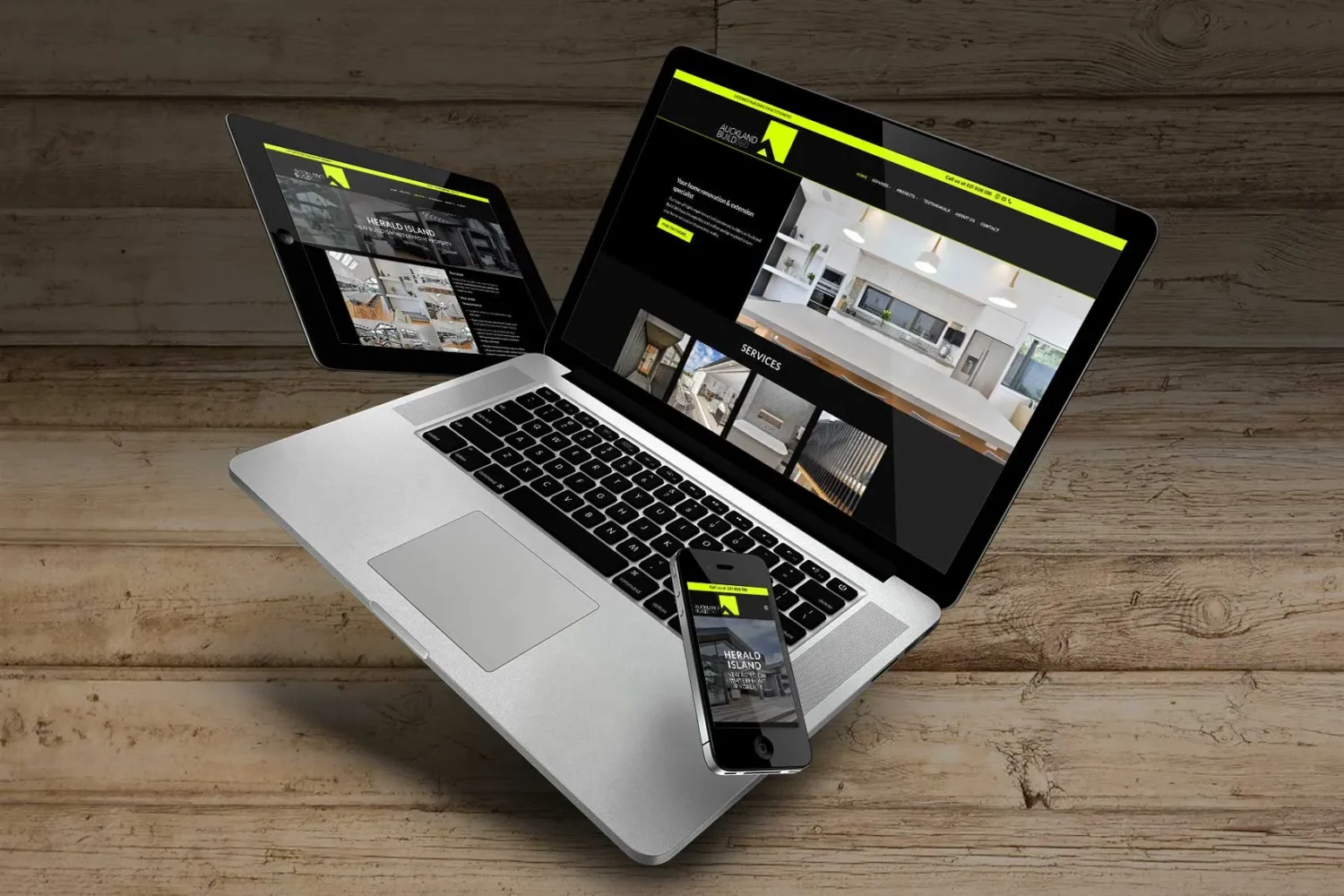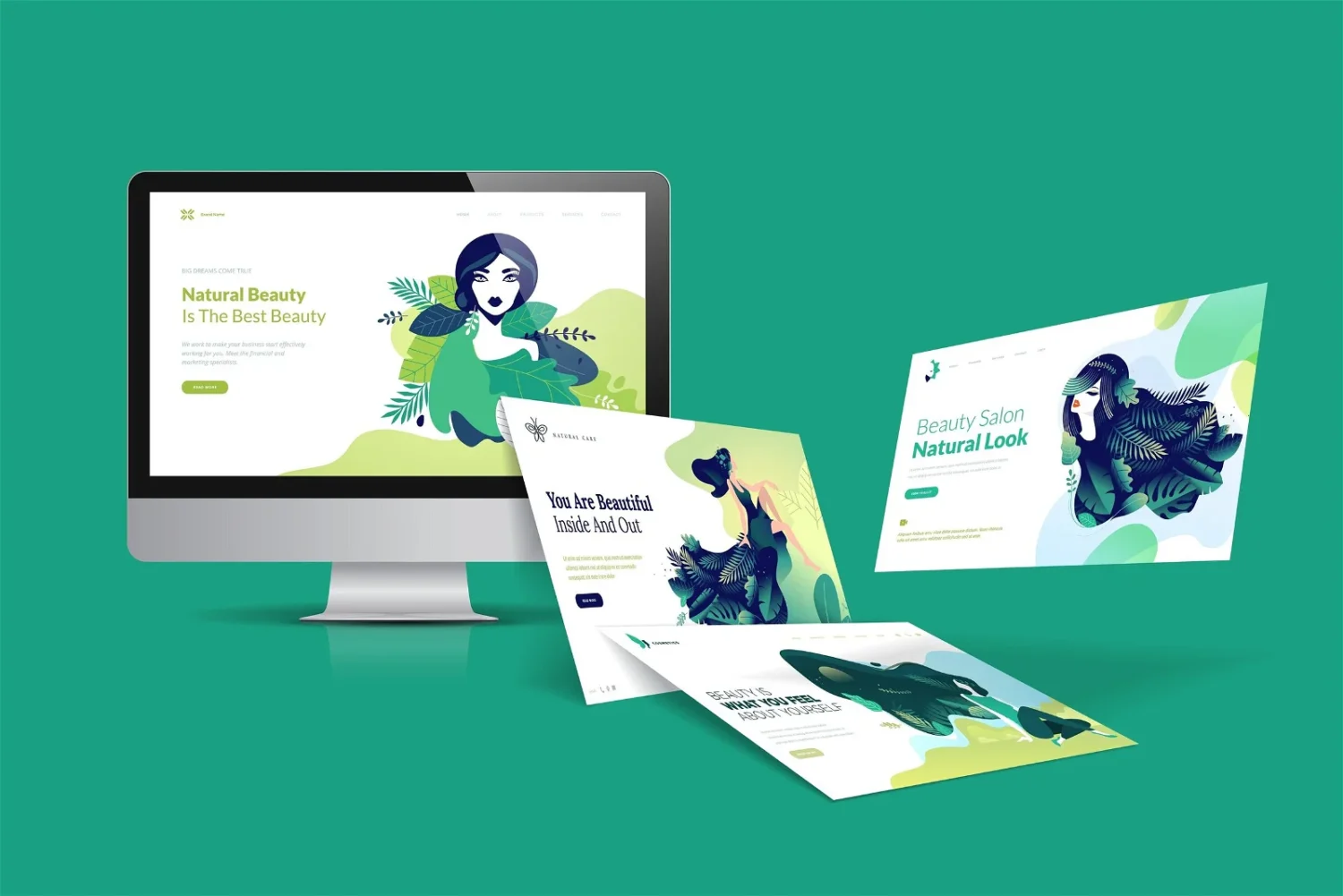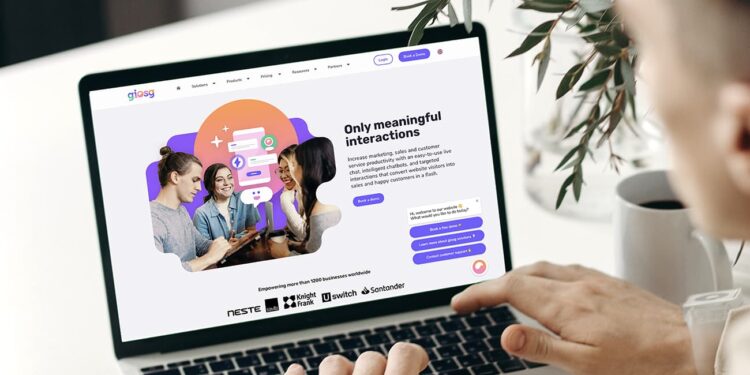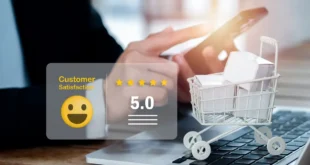The world of web design is rapidly evolving, with emerging trends reshaping how websites function and how users engage with them. The focus has shifted from just aesthetics to creating intuitive, immersive, and user-centric experiences.
In this landscape, the role of a Web Design Agency has become increasingly critical in staying ahead of trends and implementing cutting-edge solutions that meet modern expectations. Let’s explore some of the key trends that are revolutionizing the field and transforming user experience (UX).
Minimalism and Simplicity ─ Less is More
Minimalist design isn’t just a style—it’s a movement. Modern users are gravitating toward websites that offer a clean, clutter-free interface. The minimalism trend focuses on the essentials, offering users a smooth, distraction-free browsing experience. This trend is often characterized by ample white space, sharp typography, and minimal elements, creating a sleek, functional, and aesthetically pleasing design.
For any web design agency, implementing minimalist design is crucial to achieving high user satisfaction. Minimalism also boosts loading times and enhances the mobile experience, which is critical in a world where users expect websites to load in under 3 seconds. The challenge is to strike a balance between simplicity and functionality, ensuring that users can access all necessary information without feeling overwhelmed.
The Popularity of Dark Mode
Dark mode has evolved from being a simple aesthetic preference to a major trend in modern web design. It offers a sleek, modern look that appeals to users, particularly for those who spend long periods browsing in low-light environments. Dark mode reduces eye strain, saves battery life on OLED and AMOLED screens, and can even improve readability.
For a web design agency, offering a dark mode option as part of a website’s design ensures greater flexibility for users. This trend isn’t just about aesthetics—it’s about giving users more control over how they experience your site. By integrating dark mode seamlessly, you show a commitment to user comfort and accessibility, both of which are key to long-term user engagement.

Immersive Microinteractions ─ Elevating User Engagement
Microinteractions have become a critical element in modern web design, enhancing user engagement by offering small but meaningful responses to user actions. Whether it’s a button animating when clicked, an icon changing color when hovered over, or a confirmation message after completing a form, these subtle design elements add interactivity and personality to a website.
For any webdesign agency, incorporating micro-interactions is a must when creating a dynamic user experience. These small interactions can delight users and make navigation feel more intuitive, giving feedback at the right moment and making the interface more engaging. As web design becomes more user-centered, micro interactions help to humanize digital interactions, making websites feel more responsive and alive.
Voice User Interfaces (VUI) ─ The Future of Interaction
Voice technology is rapidly becoming a dominant force in digital interactions, with voice search and voice commands becoming a standard feature in many devices and apps. As voice assistants like Siri, Alexa, and Google Assistant become more prevalent, a web design agency must adapt its strategies to incorporate voice user interfaces (VUI). VUI allows users to navigate websites, search for products, and even complete transactions using only their voice.
Incorporating VUI into web design enhances accessibility, making websites more inclusive for users with disabilities or those who prefer hands-free browsing. The future of web design is not just visual—it’s interactive in ways we hadn’t anticipated a few years ago. Voice-enabled websites will soon become a key differentiator for businesses looking to offer an enhanced, frictionless experience.
Personalization Through AI and Machine Learning
In the evolving world of digital marketing, personalization is no longer just a nice-to-have feature—it’s an expectation. AI and machine learning are driving this trend by enabling websites to provide tailored experiences to users based on their behavior, preferences, and past interactions.
For a forward-thinking web design agency, integrating AI-driven personalization can revolutionize the way websites interact with their users. From personalized content suggestions to customized product recommendations, AI allows websites to create individualized experiences that resonate with visitors. This personalized approach can significantly increase engagement and conversion rates, making websites more effective and user-friendly.

The Shift to Mobile-First Design
Mobile-first design has become a priority for any web design agency that aims to stay competitive in today’s digital world. With the majority of users accessing websites via smartphones and tablets, designing for smaller screens is no longer optional. Mobile-first design emphasizes fast load times, simplified navigation, and layouts that look great on any device.
A mobile-first approach ensures that users have a seamless experience regardless of whether they are using a desktop, tablet, or smartphone. For businesses, this trend is critical for capturing mobile traffic, which now surpasses desktop traffic in most industries. In the future, the demand for responsive, mobile-optimized websites will only grow as more users rely on mobile devices for their online interactions.
The Rise of 3D Elements and Immersive Experiences
Web design is increasingly incorporating 3D elements, immersive animations, and interactive visuals to create more engaging, eye-catching experiences. This trend allows designers to create depth and realism that draws users in, making their browsing experience feel more dynamic and interactive.
For a web design agency, leveraging 3D design elements provides a unique way to capture attention, differentiate from competitors, and immerse users in the brand’s story. From interactive product displays to 3D animations that enhance storytelling, this trend is opening up new ways to engage users and create memorable online experiences.
Sustainable and Eco-Friendly Web Design
As sustainability becomes a growing concern globally, businesses are looking for ways to reduce their digital carbon footprint. This has led to the rise of eco-friendly web design, which focuses on creating lightweight websites that use less energy, reduce loading times, and optimize server usage.
For a web design agency, embracing sustainable design practices not only benefits the environment but also enhances website performance. Lightweight designs with optimized code and fewer resources lead to faster load times and a better user experience.
This trend reflects the growing awareness among consumers, who are increasingly seeking out businesses that prioritize sustainability in all aspects of their operations, including web design.

The Role of Augmented Reality (AR) in Web Design
Augmented Reality (AR) is another cutting-edge trend that is making waves in web design. AR allows users to engage with digital elements overlaid on the physical world, creating an interactive experience that blends reality with technology.
This trend is particularly prominent in e-commerce, where users can virtually “try on” clothes, see how furniture looks in their homes, or even test makeup products before purchasing.
For a web design agency, integrating AR into websites can be a game-changer. It enhances the user experience by allowing visitors to interact with products in a more immersive way, bridging the gap between online and in-person shopping. By adopting AR technology, agencies can offer clients innovative ways to engage their customers, making their websites stand out in a crowded digital marketplace.
Chatbots and Conversational UI
Chatbots and conversational user interfaces are becoming essential tools in web design, providing instant communication and assistance to website visitors. Powered by AI, chatbots can answer customer questions, guide users through the site, and even help with transactions—all in real-time. This trend is crucial for improving customer service and reducing friction in the user journey.
A web design agency that implements chatbot technology helps businesses provide 24/7 support, enhance customer satisfaction, and streamline the user experience. Chatbots are particularly useful for e-commerce sites, where they can assist with product recommendations, answer questions about orders, and resolve issues quickly. The future of web design is conversational, and chatbots are leading the way in creating more personalized and responsive online interactions.

The Push for Faster Loading Times and Performance Optimization
Website speed has always been important, but it’s now a critical factor that can make or break a user’s experience. Studies have shown that if a website takes more than 3 seconds to load, users are likely to abandon it. In addition, search engines like Google consider page speed as a ranking factor, making it essential for SEO.
For a web design agency, optimizing websites for speed is a priority. Techniques like lazy loading, image compression, and the use of lightweight frameworks can dramatically improve performance. With the rise of mobile-first indexing, fast-loading websites that are mobile-optimized are rewarded with higher search engine rankings and better user engagement.
Cybersecurity ─ Protecting Users and Data
As websites become more complex, they also become more vulnerable to security threats. From phishing attacks to data breaches, cybersecurity is a major concern for both users and businesses. A secure website not only protects sensitive information but also builds trust with users.
A web design agency must prioritize cybersecurity by implementing measures like SSL certificates, encrypted connections, and secure authentication processes. In an era where privacy is a growing concern, especially with regulations like GDPR, agencies must ensure that the websites they design comply with legal requirements and safeguard user data.
The Rise of No-Code and Low-Code Platforms
No-code and low-code platforms are transforming the way websites are built, making it easier for non-developers to create and maintain websites. These platforms offer drag-and-drop interfaces, pre-designed templates, and built-in functionalities that allow businesses to launch websites quickly without deep technical knowledge.
For a web design agency, this trend opens up new possibilities for collaboration. Agencies can leverage these platforms to speed up the design process, allowing clients to have more control over their content management. While no-code tools empower users, agencies still play a vital role in ensuring that the final design is professional, responsive, and optimized for performance.

Green Hosting and Sustainable Web Design
As environmental concerns grow, web designers are starting to consider the impact of digital infrastructure on the planet. Green hosting refers to using hosting providers that are powered by renewable energy, helping reduce the carbon footprint of websites. Alongside green hosting, there’s also a push towards creating websites that are energy-efficient by minimizing the use of heavy graphics, excessive code, and third-party scripts.
A web design agency committed to sustainability can differentiate itself by offering eco-friendly design solutions. These practices not only reduce the environmental impact of websites but also appeal to environmentally-conscious users and businesses. As more consumers prioritize sustainability, this trend is likely to become a key consideration in web design moving forward.
Advanced Animations and Motion UI
Motion UI and animations are being used to create visually engaging websites that captivate users from the moment they land on a page. Whether it’s a subtle hover effect, parallax scrolling, or animated transitions between pages, motion can add a dynamic layer to the user experience.
A web design agency that utilizes animations effectively can create a more interactive experience that guides users through the site in an intuitive way. However, the key is moderation—animations should enhance the experience, not overwhelm it. When done right, motion design can lead to higher user engagement, making the website feel more alive and engaging.
Inclusive Design ─ Accessibility is Key
Web accessibility is no longer an afterthought—it’s becoming a crucial element of web design. Inclusive design ensures that websites are usable by people of all abilities, including those with visual, auditory, or cognitive impairments. Features like alt text for images, keyboard navigation, screen reader compatibility, and proper color contrast are essential for creating accessible websites.
For any web design agency, focusing on accessibility not only ensures compliance with legal standards (like the Americans with Disabilities Act in the U.S.) but also broadens the website’s reach to a more diverse audience. By designing for inclusivity, agencies can create websites that provide a seamless experience for everyone, regardless of their abilities.

Conclusion ─ The Future is Here
The future of web design is a blend of aesthetics, functionality, and user-centered innovation. As these emerging trends take shape, every web design agency must be ready to adapt and evolve. From AI-driven personalization to voice interfaces, the focus is shifting toward creating more immersive, accessible, and intuitive digital experiences.
The web design revolution is well underway, and it’s transforming not just how websites look, but how users interact with them. Agencies that stay on top of these trends will lead the charge in crafting the future of the internet—one that is faster, smarter, and more user-friendly than ever before.
 Hi Boox Popular Magazine 2025
Hi Boox Popular Magazine 2025



